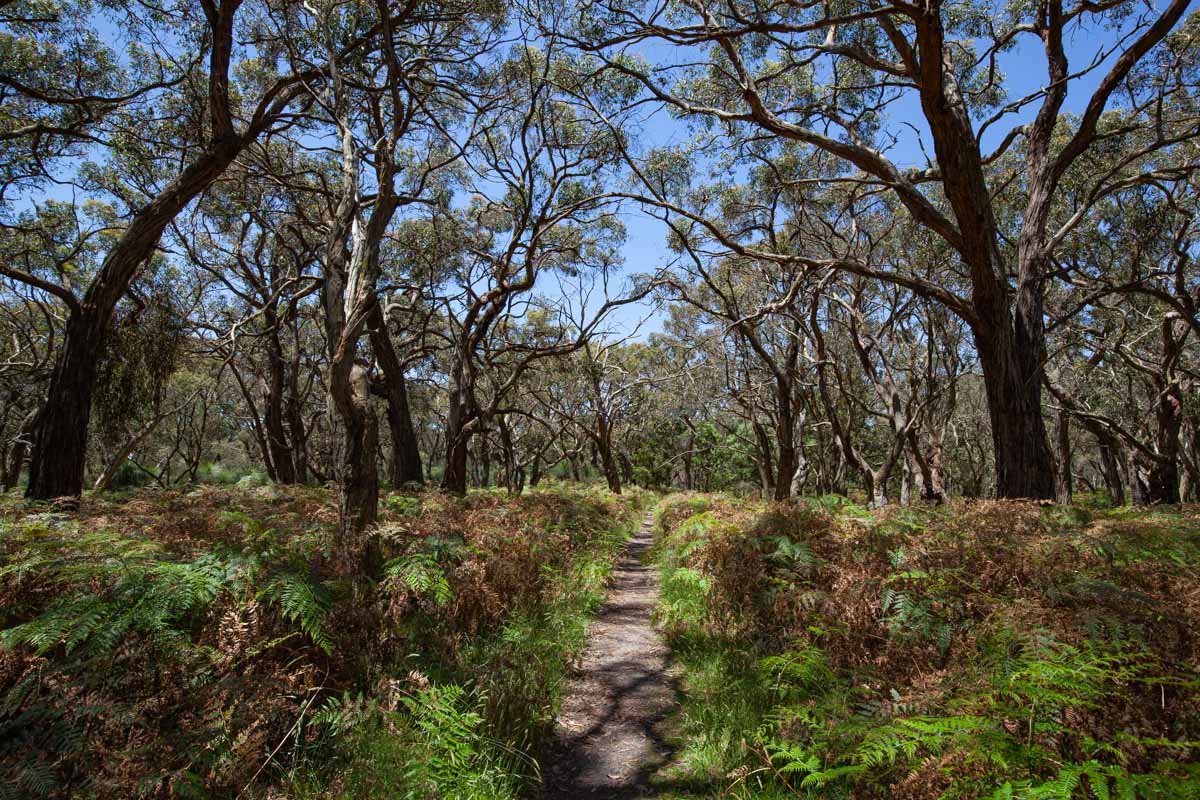20.01.2023 | Our toxic relationship with endocrine-disrupting chemicals
Jan 19, 2023 11:01 pm
We protect what we love
FRIDAY 20.01. 23.
Good morning and happy Friday.
Did anyone else tear up on Monday when watching Erchana's Instagram stories? Erchana is a perfect example of how sports activism can be used to raise awareness about environmental issues. Her positivity seems infectious and everyone here at FWP loved following along on her journey. Erchana completed 150 marathons in 150 days and, in doing so, has raised over $125,000 for The Wilderness Society to help fight the extinction crisis. Whilst money is always a necessity, she also spent a lot of time in schools and with community groups to raise awareness about habitat protection, which is just as important. Erchana has certainly inspired a lot of people with her mindset, dedication and genuine passion for the environment, and we hope she's now getting some well-earned rest. I reached out to her via Instagram to congratulate her and got such a warm response in return - "Everyone on here [Instagram] has made me feel so safe and supported the whole way through - it's the best! Now let's cheer on the next legend who tries something like this".
Erchana crossing the finish line of her 150th
consecutive marathon.
Now onto this week's newsletter. As promised, we're hearing from fish veterinarian Matt Landos on the impacts of endocrine-disrupting chemicals (found in agricultural run-off) on fish embryos and the problem with current pesticide spraying regulations. We've also partnered with Survive First Aid to organise a ‘Trail First Aid’ course, on the Mornington Peninsula. Read on to find out how you can register. Finally, we're also excited about our upcoming Trail Chat #9 with Peyton Thomas, so have included a link to register.
📝 🙏🏽 🙂
TOXIC RELATIONSHIPS
The problem with endocrine-disrupting chemicals (EDCs)
Matt Landos, who specialises in fish.
What are EDCs?
Endocrine-disrupting chemicals (EDCs) are everywhere. They're applied to food and the packaging it comes in. They're on the clothes we wear, in the cars we drive and on the furniture on which we sit.
The Endocrine Society defines EDCs as: “an exogenous [non-natural] chemical, or mixture of chemicals, that interferes with any aspect of hormone action”.
My introduction to EDCs
I first learned of this when visiting my cousin, Tracey, who lives in Ballina. Her partner, Matt Landos, is a fish veterinarian. Matt is the Founder and Director of Future Fisheries Veterinary Service Pty Ltd, which provides field, laboratory, research and technical aquatic animal health and production veterinary services to commercial aquaculture and wild fisheries. He also undertakes considerable work in the area of how contaminants influence fisheries at the interface of land and water.
It was whilst driving past a field of Macadamia trees that my cousin introduced me to the toxicity of farming practices. You see, Macadamia trees, if planted too close together, grow fungi around the base of the tree. Sunlight, a natural predator of this fungi, needs to reach the base of the Macadamia trees to prevent the growth of this tree-killing fungi.
As my cousin so perfectly states, "so many of the problems in farming and food production can be fixed by the environment, but this means less yield production. It depresses me that people are so driven by consumption and money when what really brings our souls the most peace is nature, and we are actively killing it".
Instead of increasing the distance between the trees (which will result in less yield), farmers spray the Macadamia trees with toxic pesticides. These run down the countryside and into local rivers, which is where Matt's work comes into play.
Matt and his son spending time planting trees on riverbanks. Source.
The impact of EDCs on fish populations
13 years ago, Matt was called to a small hatchery - they were having problems getting their fish to survive and noticed some strange developments in the eggs and larvae of the fish. He knew there was something seriously wrong when he saw the two-headed fish larvae.
The hatchery operator suspected the problem may be stemming from the practices of their neighbour operating a commercial macadamia farm and utilising registered agricultural sprays on their crop. However, when the hatchery operator took her concerns to the Queensland government, the subsequent investigation into the macadamia farm found the operator was in compliance with the regulations around the application of spraying.
Matt still has issues with the report's findings, as it was clear from his perspective that chemicals were to blame - the embryos were being deformed through their exposure to EDCs in the pesticide.
And it's not just fish that are impacted. On a neighbouring property, many pups in a litter were stillborn, and some had no eyes during their development. Whilst these can be aberrations, the peer-reviewed literature indicates a clear correlation and causation between chemicals and early development.
One of the biggest concerns that Matt has with the report is that, although the sprays may have been applied legally as far as regulations were concerned, the investigation highlighted problems with the regulation of safe exposure levels. In other words, the regulation of chemicals hasn't kept up with the growing body of research which identifies harm associated with exposure to even tiny amounts of EDCs.
You can read more about this in a recent article in The Canberra Times.
Matt and Charlie learning about country with a Hope Vale Elder whilst on holiday in Cape York, Australia.
What can we do about EDCs?
The article in The Canberra Times left me feeling a little deflated, like "other than voting, what can I actually do to help chemical regulation?". So I reached out to Matt and asked him. His recommendations raise awareness about the number of chemicals in the home and what you can do to lower the amount.
Household
- Many household compounds can contain EDC’s
- Eliminate plug-in, vaporiser or burner-type scent generators, that can make toxic volatile fumes in the home, some of which can be phthalates which are EDC’s amongst other toxic gases like formaldehyde
Clothing
- Eliminate as many plastics as possible from food/textiles (polyester etc) - choose natural fibres (this could be a little hard for us outdoor enthusiasts, especially in summer)
Food
- Eliminate non-stick cookware that can contain Teflon, which contains PFAS which are a group of EDCs
- Buy, or even better, grow organic, or spray-free produce. Avoid food packagings which are plastic and can shift plasticisers (BPA BPS into food)
- Do not microwave food in plastic - EVER
- Store food in glass/pyrex
- Rinse dishes after using detergents. Some detergents are EDCs
- Grow your own food, so you know its provenance and its spray history. Don’t use pesticides on your homegrown vegetables
- Use the Environmental Working Group website to help guide better choices for laundry detergents, that avoid optical brighteners and avoid fragrances
Beauty & cosmetics
- Don’t wear perfume or fragranced deodorant- often contain phthalates- EDCs
- Avoid most cosmetics as they can contain plastics (inc. PFAS, parabens and phthalates), all of which can be EDC’s, and are absorbed through your skin.
🦐 🐟 🦀
TRAIL FIRST AID COURSES
Let's be safe out on the trails
We are excited to be partnering with Survive First Aid to organise a ‘Trail First Aid’ course, on the Mornington Peninsula. We love spending time out in wild places, but we want to do it safely, to not only protect ourselves but those we share these experiences with. One of the best things about trail running is the minimalist aspect - no heavy packs, lightweight gear and only the essentials. But what does that mean when something goes wrong?
In this trail-specific session, the experienced team at Survive First Aid will take us out on trails, and show us how to use what is on hand to treat common trail mishaps and injuries. As well as giving advice on what essential First Aid items we should take out on the trails with us.
Join us on Saturday 11th February from 9.00am – 4.30pm, leaving from Arthurs Seat. The course will take place along the 2 Bays trail and is $170 per person, and numbers are limited. Click the link below for more info and pre-register. We need 10 people to be able to run the course, so if you know of anyone who would benefit from this course, please, pass it on!
⛑️ 🎒 🩸 🤕
TRAIL CHAT #9
with Peyton Thomas
This Thursday, don't forget to join us for Trail Chat #9 with Boulder-based athlete, environmental advocate and marine biologist, Peyton Thomas.
You can check out more about Peyton via her website or Instagram. If you'd like to join us, RSVP to receive the Zoom link. We will record the chat and it will be available via our YouTube channel shortly after.
⛰️ 👟 🙌🏽
That's it for this week, folks!
Thank you for your ongoing support; we can't wait to continue the journey and see what this year brings! As always, THANK YOU for taking the time, for wild places.
Elanor & the For Wild Places team
UPCOMING EVENTS
26/01 Trail Chat #9 with Peyton Thomas | register
01/02 Pilliga Tee & Postcard orders close | order now
11/02 Trail First Aid Course, Arthurs Seat | register
25/02 takyana Trail, Waratah, Tasmania | register
We acknowledge the the First Nations people who have been custodians of land, waters and culture for tens of thousands of years. We pay respects to First Nations Elders past, present and emerging.
This email was written on the lands of the Gadigal People of the Eora Nation. To these people, we pay our respects.
Always was, always will be.









